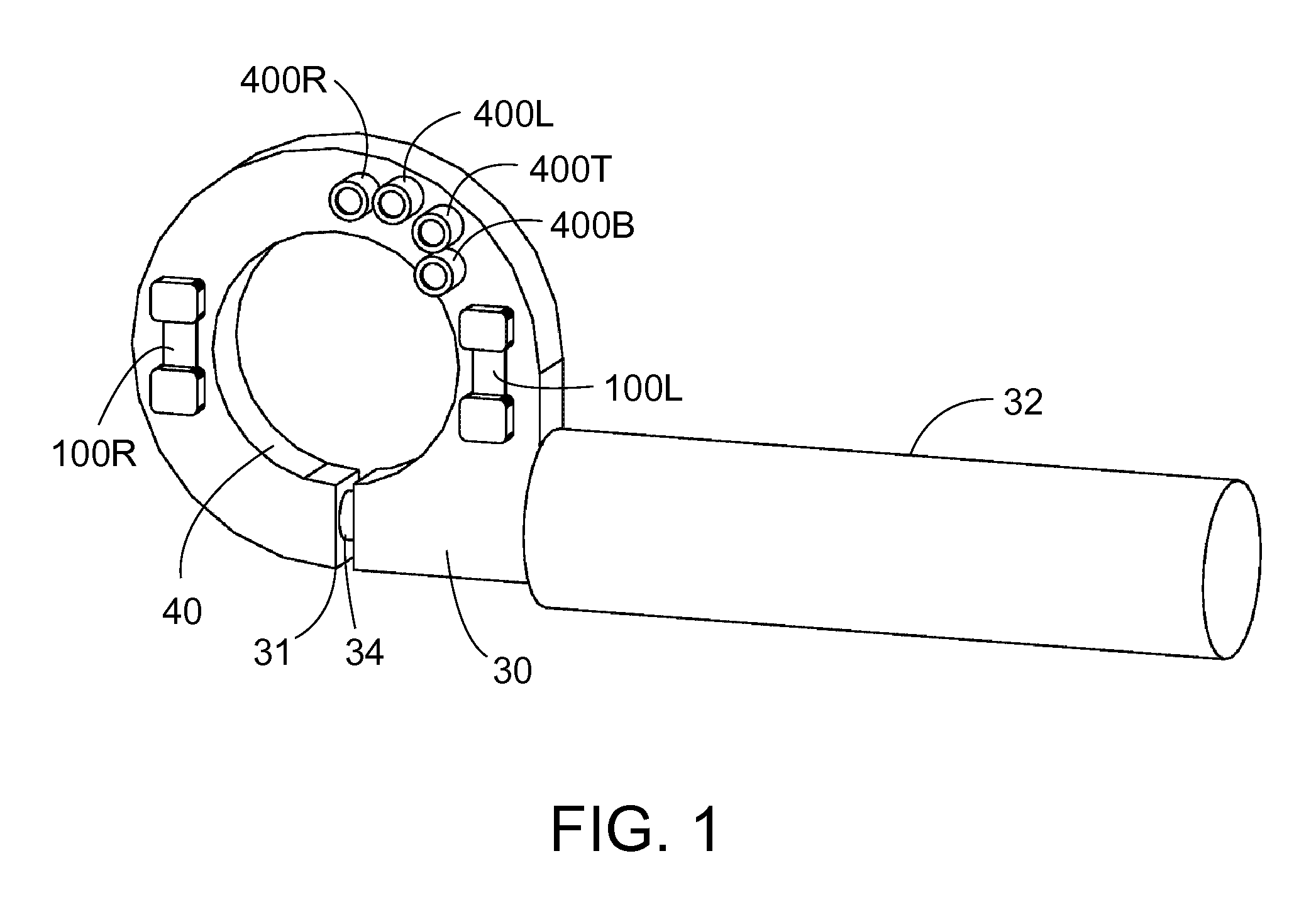Electronic drill guide
a drill guide and electronic technology, applied in the field of electronic drill guides, can solve the problems of difficulty in consistently drilling perpendicular holes using a hand-held power drill, affecting the visibility of the surface, and cumbersome mechanical jigs, and achieve the effect of convenient viewing
- Summary
- Abstract
- Description
- Claims
- Application Information
AI Technical Summary
Benefits of technology
Problems solved by technology
Method used
Image
Examples
first embodiment
2, 7-9, 12A-12J
[0126]The following description is not to be taken in a limiting sense, but is made merely for the purpose of describing the general principles of the electronic drill guide. The scope of the drill guide should be determined with reference to the claims.
[0127]FIG. 1 shows a perspective front view of the electronic drill guide constructed in accordance with one embodiment. This embodiment is in the form of an auxiliary handle for a power drill. An enclosure 30 has an opened collar 40 which fits around the neck of a power drill. The collar 40 has a gap 31. A handle 32 is connected to a threaded bolt 34 which is threaded into the enclosure 30 such that twisting the handle 32 tightens or loosens the collar 40. Batteries (not shown) are contained within the handle 32. Referring to FIG. 2 and FIG. 4, the power drill 60 has a drill bit 61 which rotates about a working axis or drilling axis 53. The base of the drill 60 has a battery pack 65. The enclosure 30 has a front plane...
PUM
 Login to View More
Login to View More Abstract
Description
Claims
Application Information
 Login to View More
Login to View More - R&D
- Intellectual Property
- Life Sciences
- Materials
- Tech Scout
- Unparalleled Data Quality
- Higher Quality Content
- 60% Fewer Hallucinations
Browse by: Latest US Patents, China's latest patents, Technical Efficacy Thesaurus, Application Domain, Technology Topic, Popular Technical Reports.
© 2025 PatSnap. All rights reserved.Legal|Privacy policy|Modern Slavery Act Transparency Statement|Sitemap|About US| Contact US: help@patsnap.com



